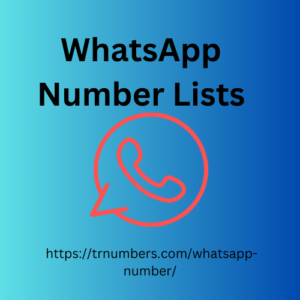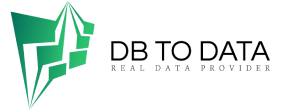Introduction
For a business generating $100 million Building a Media Contact in revenue, effective communication and public relations are essential. A well-structured media contact database can significantly enhance your PR efforts, ensuring your messages reach the right audience. This article will explore the importance of a media contact database, how to build one tailored for a high-revenue business, and best practices for maintaining it.
Importance of a Media Contact Database
Enhancing PR Efficiency
A media contact database streamlines the process of reaching out to journalists, bloggers, and influencers. It enables targeted communication, ensuring your press releases and announcements get the attention they deserve.
Targeted Outreach
By organizing contacts based on their interests and areas of expertise, you can conduct more targeted outreach. This increases the likelihood of your message being picked up by relevant media outlets.
Building Strong Relationships
Consistent and personalized communication with media contacts helps build and Benefits of WhatsApp Number Lists maintain strong professional relationships. These relationships can be crucial for securing media coverage and building your brand’s reputation.
Key Components of a Media Contact Database
Basic Information
Contact Name
The full name of the media contact is essential for personalized communication.
Job Title
Including the job title helps in understanding the role and responsibilities of the contact, ensuring your pitch is directed to the right person.
Organization/Publication
Knowing the organization or publication provides context about the type of content they produce and their audience.
Contact Details
Email Address
An up-to-date email address is crucial for sending press releases and pitches.
Phone Number
Having a phone number allows for more direct and immediate communication when necessary.
Media Type and Specialization
Media Type
Categorize contacts based on the type of media they work for, such as print, online, broadcast, or social media.
Specialization/Beat
Identifying the specialization or beat (e.g., technology, health, finance) helps in targeting the right media professionals for specific stories.
Social Media Profiles
Twitter Handle
Including the Twitter handle can help in engaging with media contacts on social platforms and keeping up with their latest work.
LinkedIn Profile
A LinkedIn profile provides a professional background and additional contact methods.
Notes and Preferences
Communication Preferences
Noting the preferred method and time for communication can improve the effectiveness of your outreach.
Previous Interactions
Documenting previous interactions, such as past coverage or feedback, helps in personalizing future communications.
Creating a Media Contact Database for a $100 Million Revenue Business
Using Advanced CRM Systems
For a business of this scale, leveraging Customer Relationship Management (CRM) software is crucial. CRM systems like Salesforce or HubSpot Boost Your Business with Effective Lead Generation in Brisbane offer advanced features such as automated emails, integration with social media, and detailed analytics.
Example CRM Template
Implementing a Tiered Approach
For a business generating significant revenue, it’s beneficial to implement a tiered approach to media contacts. This involves categorizing contacts based on their influence and relevance to your industry.
Tier 1: High-Influence Contacts
These are top-tier journalists, editors, and influencers who have a significant reach and impact in your industry. Prioritize personalized and regular communication with these contacts.
Tier 2: Mid-Influence Contacts
These contacts have a moderate reach and impact. Regular updates and targeted pitches are essential to maintain a good relationship.
Tier 3: Niche Contacts
These are journalists and influencers with a specialized focus that aligns closely with your business. They may have a smaller audience but can be highly influential within their niche.
Best Practices for Maintaining Your Media Contact Database
Regular Updates
Media professionals often change jobs or roles, so it’s important to regularly update your database to ensure the information remains accurate.
Personalization
Whenever possible, personalize your communication based on the information in your database. This increases the chances of your messages being read and acted upon.
Data Security
Ensure that your media contact database complies with data protection regulations and that sensitive information is securely stored.
Backup
Regularly back up your database to prevent data loss due to technical issues or human error.
Leveraging Data Analytics
Monitoring Engagement
Use data analytics tools to monitor engagement with your communications. This includes tracking open rates, click-through rates, and response rates.
Analyzing Coverage
Evaluate the media coverage your business receives to understand which contacts and outlets are most responsive. Use this data to refine your outreach strategy.
Measuring ROI
Calculate the return on investment (ROI) of your PR efforts by comparing the cost of Building a Media Contact your media outreach with the value of the coverage received. This helps in allocating resources more effectively.
Conclusion
For a business generating $100 million in revenue, a well-structured media contact database is a vital asset. By organizing your media contacts efficiently, leveraging advanced CRM systems, and implementing a tiered approach, you can enhance your PR efforts and ensure your messages reach the right audience. Regular maintenance and data analytics are key to maximizing the effectiveness of your media contact database and achieving your business goals.


